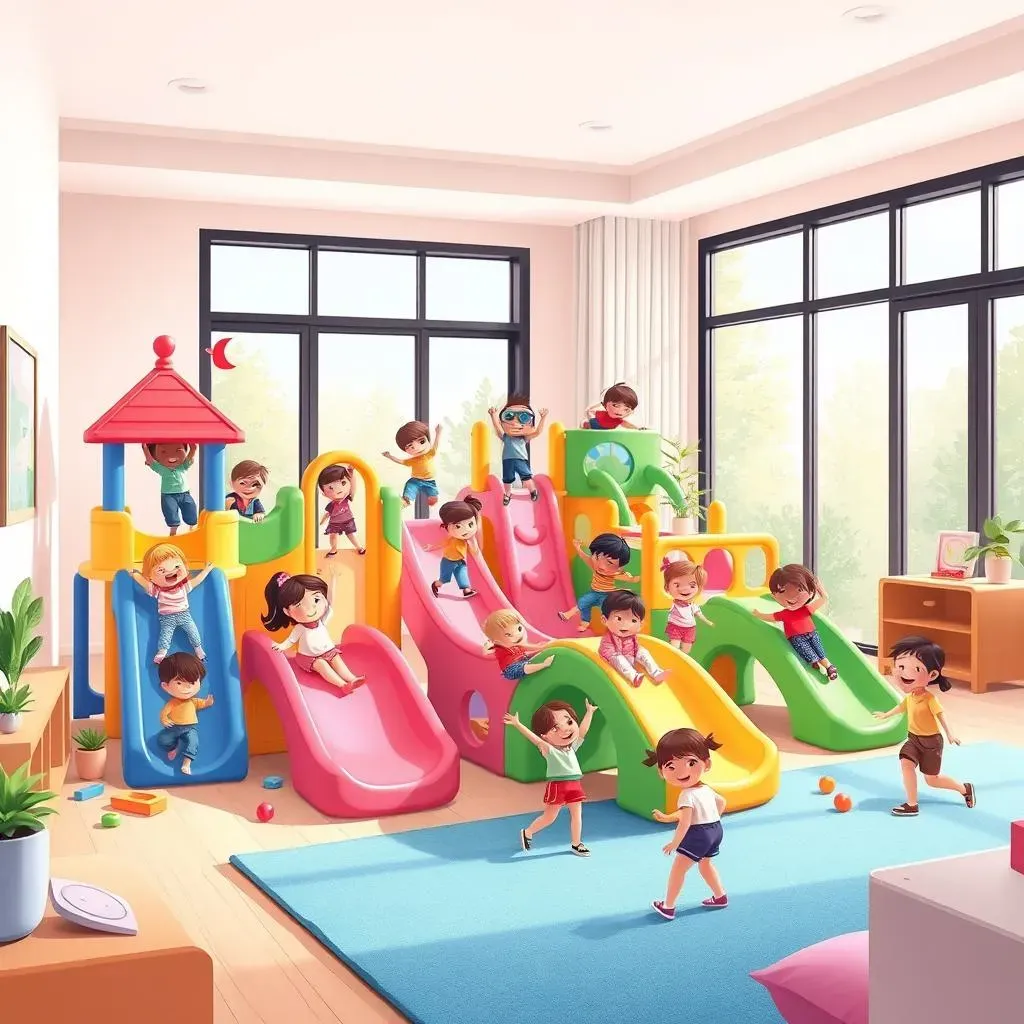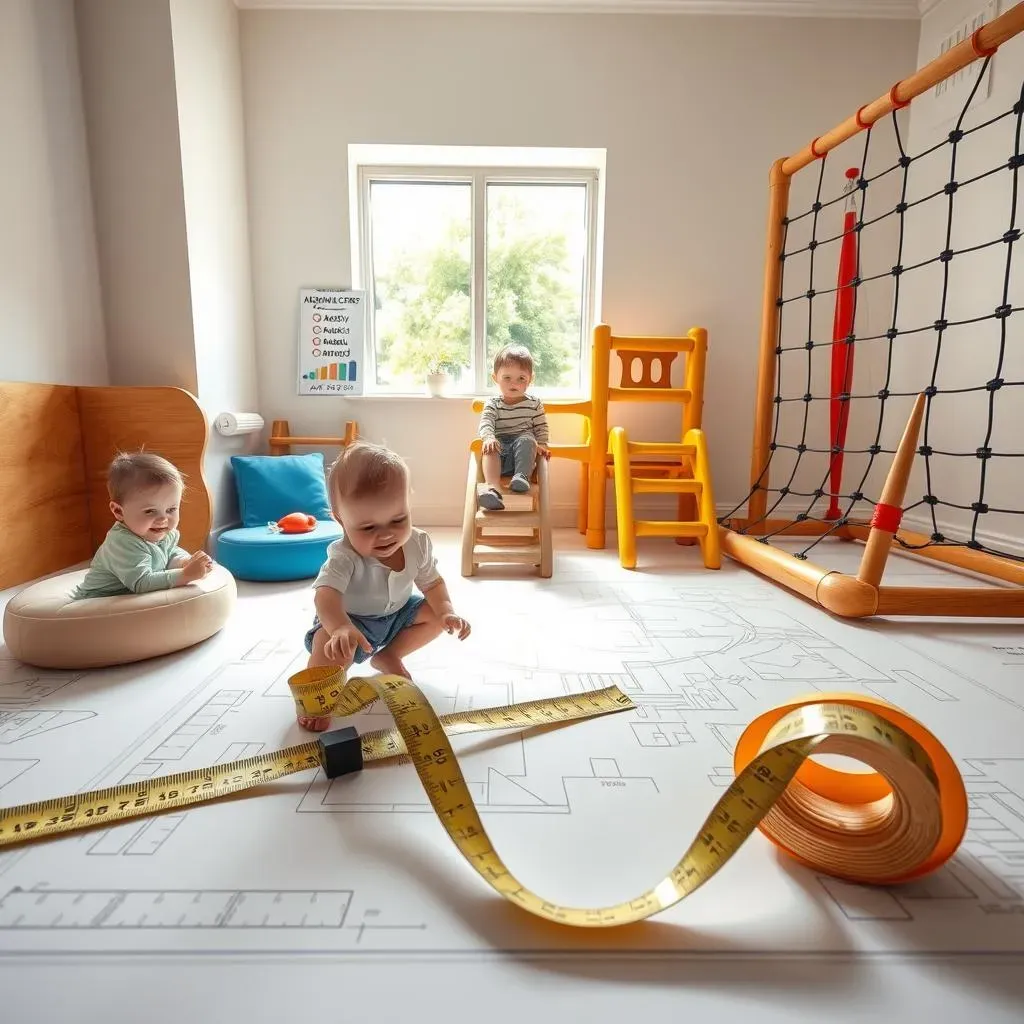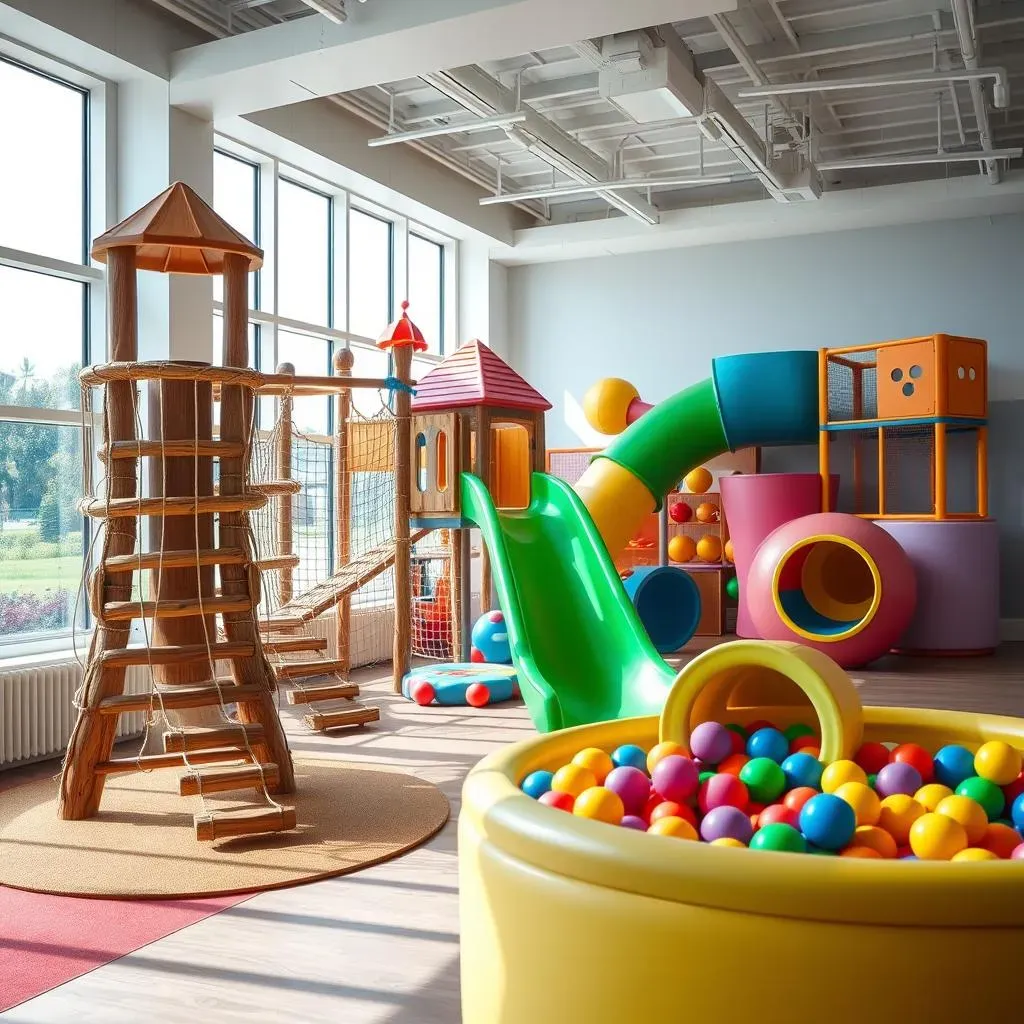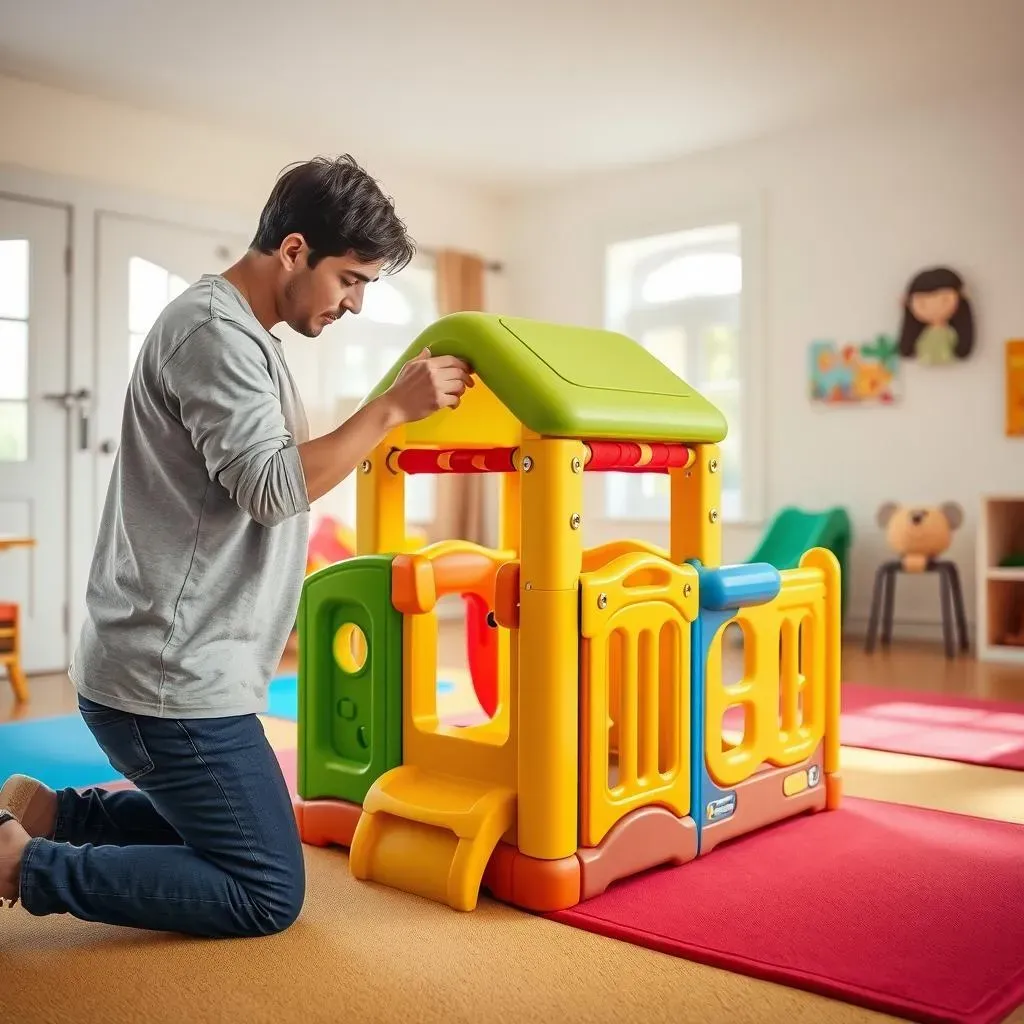Table of Contents
Tired of hearing "I'm bored!" on repeat? Imagine transforming your home into a haven of fun and activity, regardless of the weather outside. That's the magic of residential indoor playground equipment. More than just a play area, it's an investment in your children's physical and mental development, sparking creativity and burning off energy in a safe, controlled environment.
Benefits of Residential Indoor Playground Equipment

Benefits of Residential Indoor Playground Equipment
Physical Development and Gross Motor Skills
Let's be real, kids are bundles of energy! Residential indoor playground equipment provides a fantastic outlet for that energy, encouraging physical activity regardless of the weather. Think about it: climbing, sliding, crawling – these activities are crucial for developing gross motor skills, coordination, and balance. It's not just about fun; it's about building a strong foundation for a healthy, active lifestyle. Plus, it's a great way to combat the sedentary habits that can creep in with too much screen time. Remember those rainy days when the kids were bouncing off the walls? An indoor playground solves that problem!
Cognitive and Social-Emotional Growth
It's easy to focus on the physical benefits, but indoor playgrounds are also powerhouses for cognitive and social-emotional development. When kids engage in imaginative play on this equipment, they're problem-solving, creating stories, and developing their creativity. Interacting with siblings or friends on the playground teaches valuable social skills like sharing, cooperation, and communication. They learn to navigate social situations, negotiate rules, and resolve conflicts – all while having a blast. It's like sneaking in a lesson in social intelligence while they think they're just playing!
Convenience, Safety, and Year-Round Fun
let's talk about the practical side. As parents, we're always looking for ways to make life a little easier, right? Having residential indoor playground equipment is incredibly convenient. You don't have to pack up the kids and head to the park – the fun is right there at home, rain or shine. And speaking of safety, you have much more control over the environment compared to a public playground. You can choose the equipment, ensure proper installation, and supervise play to minimize the risk of injuries. Plus, it's a fantastic way to keep kids active and entertained year-round, especially during those long winter months or scorching summer days.
Key Benefits at a Glance:
- Promotes physical activity and combats sedentary behavior
- Develops gross motor skills, coordination, and balance
- Fosters creativity, problem-solving, and imaginative play
- Encourages social interaction, cooperation, and communication
- Provides a safe, controlled play environment
- Offers year-round fun and entertainment
- Adds convenience to busy family life
Factors to Consider When Choosing Indoor Playground Equipment

Factors to Consider When Choosing Indoor Playground Equipment
Space and Size Requirements
Alright, so you're thinking about bringing the playground inside? Awesome! First things first: let's talk space. Before you get carried away with visions of epic slides and climbing walls, realistically assess the area you have available. Measure, measure, measure! Consider not just the floor space, but also the ceiling height. Some equipment requires significant vertical clearance. You don't want your kids bumping their heads on the ceiling every time they reach the top of the climbing structure, trust me. Also, think about leaving enough open space around the equipment for safe movement and play. Cramped quarters lead to bumped heads and frustrated kiddos.
A good tip is to map out the dimensions on the floor using painter's tape. This will give you a visual representation of how much space the equipment will actually occupy. Don't forget to factor in space for safety mats or padding around the play area. Safety first!
Age Appropriateness and Safety Standards
This isn't a one-size-fits-all situation. A playground designed for toddlers isn't going to be as engaging (or safe) for older children, and vice versa. Pay close attention to the age recommendations provided by the manufacturer. These guidelines are based on the size, strength, and developmental abilities of children in different age groups. Choosing equipment that's too advanced can lead to frustration and potential injuries, while equipment that's too simple might not hold their interest. Also, make sure that the residential indoor playground equipment you're considering meets relevant safety standards. Look for certifications from organizations like ASTM International or the Consumer Product Safety Commission (CPSC). These certifications indicate that the equipment has been tested and meets specific safety requirements.
Speaking of safety, always supervise playtime, especially with younger children. Even with the safest equipment, accidents can happen. Active supervision can help prevent injuries and ensure that kids are playing responsibly.
Budget and Material Quality
let's talk money. Residential indoor playground equipment can range in price from a few hundred dollars to several thousand, depending on the size, complexity, and materials used. Set a realistic budget before you start shopping, and stick to it. It's easy to get tempted by all the bells and whistles, but remember that the most expensive option isn't always the best. Consider the long-term value of the equipment. Cheaper options may seem appealing upfront, but they might not be as durable or long-lasting. Investing in high-quality materials will not only ensure the safety of your children but also save you money in the long run by reducing the need for repairs or replacements.
Look for equipment made from sturdy, non-toxic materials like solid wood, high-density polyethylene plastic, or powder-coated steel. Avoid equipment with sharp edges, small parts that could be choking hazards, or flimsy construction. Read reviews from other customers to get an idea of the equipment's durability and overall quality.
Key Considerations for Budget and Materials:
- Set a realistic budget
- Consider long-term value and durability
- Choose non-toxic, sturdy materials
- Read customer reviews
Types of Residential Indoor Playground Equipment

Types of Residential Indoor Playground Equipment
Climbers and Slides
When you think of indoor playgrounds, climbers and slides are probably the first things that come to mind. These are the classics for a reason! Climbers can range from simple ladders and small rock-climbing walls to more elaborate structures with ropes, nets, and tunnels. Slides come in all shapes and sizes, from gentle slopes for toddlers to twisty, turny adventures for older kids. The key here is to choose a climber and slide combo that's appropriate for your children's age and skill level. A toddler might be overwhelmed by a towering climber, while an older child might quickly outgrow a basic slide.
Consider the materials as well. Wooden climbers offer a natural, aesthetically pleasing look, while plastic climbers are often more durable and easier to clean. For slides, look for smooth, sturdy construction with high sides to prevent falls. A little padding at the bottom of the slide is always a good idea, too!
Soft Play Areas and Ball Pits
For younger children, soft play areas and ball pits are a fantastic option. These areas are typically filled with soft, padded shapes, tunnels, and other obstacles that encourage crawling, climbing, and exploration in a safe environment. Ball pits add an extra element of sensory fun, providing a colorful and stimulating experience for toddlers. Soft play areas are great for developing gross motor skills, coordination, and spatial awareness. Plus, they're just plain fun!
When choosing a soft play area or ball pit, pay attention to the quality of the materials. Look for durable, non-toxic foam padding and easy-to-clean surfaces. Regular cleaning is essential to prevent the spread of germs, especially in ball pits. Some models even come with removable, machine-washable covers for added convenience.
Equipment Type | Age Range | Benefits |
|---|---|---|
Climbers and Slides | Varies (toddlers to older children) | Develops gross motor skills, coordination, and balance |
Soft Play Areas and Ball Pits | Toddlers and young children | Encourages crawling, climbing, exploration, and sensory stimulation |
Installation and Safety Tips for Indoor Playgrounds

Installation and Safety Tips for Indoor Playgrounds
Professional Installation vs. DIY: Weighing the Options
so you've picked out the perfect residential indoor playground equipment. Now comes the big question: should you tackle the installation yourself, or hire a professional? Honestly, it depends on your comfort level, your DIY skills, and the complexity of the equipment. Some smaller, simpler sets are designed for easy home assembly with basic tools and clear instructions. However, larger, more elaborate structures might require specialized equipment or expertise to ensure proper installation. Improper installation can compromise the safety and stability of the playground, so it's not something to take lightly.
If you're unsure about your abilities, or if the instructions seem confusing, it's always best to err on the side of caution and hire a professional installer. They'll have the experience and tools to ensure that the equipment is installed correctly, safely, and according to the manufacturer's specifications. Plus, they can often spot potential problems or issues that you might miss.
Essential Safety Measures and Guidelines
Safety is paramount when it comes to indoor playgrounds. Before letting your kids loose, take the time to implement some essential safety measures. Start by thoroughly inspecting the equipment for any defects, sharp edges, or loose parts. Make sure all bolts and screws are tightened securely. Cover any exposed hardware with safety caps or padding. Place the playground on a level surface and use safety mats or padding underneath and around the equipment to cushion falls. Establish clear rules for playground use, such as limiting the number of children allowed on the equipment at one time, prohibiting roughhousing, and requiring children to remove shoes or wear socks to prevent slipping.
Regular maintenance is also crucial. Inspect the equipment regularly for wear and tear, and repair or replace any damaged parts immediately. Clean the playground frequently to prevent the spread of germs. By taking these simple precautions, you can create a safe and enjoyable play environment for your children.
Regular Inspections and Maintenance
Think of your indoor playground like a car: it needs regular check-ups to keep it running smoothly and safely. Schedule regular inspections to catch any potential problems before they become hazards. Look for loose bolts, frayed ropes, cracked plastic, or worn-out padding. Tighten, repair, or replace any damaged parts immediately. Keep the playground clean by wiping down surfaces regularly with a mild soap and water solution. Vacuum or sweep the area underneath the equipment to remove dirt and debris. If you have a ball pit, clean the balls regularly by washing them in a mesh bag with soap and water, or by using a commercial ball pit cleaning machine. Proper maintenance will not only extend the life of your residential indoor playground equipment but also ensure the safety of your children for years to come.
Inspection Item | Frequency | Action |
|---|---|---|
Loose bolts/screws | Weekly | Tighten securely |
Damaged parts | Weekly | Repair or replace |
Surface cleanliness | Weekly | Wipe down with soap and water |
Maintaining and Cleaning Your Residential Indoor Playground Equipment

Maintaining and Cleaning Your Residential Indoor Playground Equipment
Why Regular Cleaning Matters
let's face it, kids are messy. And playgrounds? Well, they're germ magnets! Think about all those little hands touching every surface, all those sneezes and coughs spreading germs around. Regular cleaning isn't just about aesthetics; it's about keeping your kids healthy and preventing the spread of illness. A clean playground is a happy playground, and a healthy playground is even better! Plus, proper maintenance can extend the life of your residential indoor playground equipment, saving you money in the long run. No one wants to deal with moldy ball pits or grimy slides, trust me.
The frequency of cleaning will depend on how often the playground is used and the number of children who play on it. As a general rule, you should aim to wipe down surfaces at least once a week, and more often if there's been a spill or if someone has been sick. Deep cleaning, including washing or sanitizing balls, mats, and other accessories, should be done at least once a month.
Cleaning Products and Techniques
When it comes to cleaning products, less is often more. Harsh chemicals can damage the equipment and pose a health risk to your children. Stick to mild, non-toxic cleaners like soap and water, vinegar and water, or commercial disinfecting wipes specifically designed for children's toys. Avoid using bleach or abrasive cleaners, as these can damage surfaces and release harmful fumes. For wooden equipment, use a wood cleaner specifically designed for children's toys. Always test the cleaner on a small, inconspicuous area first to make sure it doesn't damage the finish.
The cleaning technique will depend on the type of equipment. For smooth surfaces like slides and plastic climbers, simply wipe down with a damp cloth and your chosen cleaner. For fabric surfaces like soft play areas, vacuum regularly to remove dirt and debris, and spot-clean any stains with a mild detergent. Ball pits require more thorough cleaning. Remove all the balls and wash them in a mesh bag with soap and water, or use a commercial ball pit cleaning machine. Allow the balls to dry completely before returning them to the pit. Don't forget to clean the inside of the ball pit as well!
Preventative Measures for Long-Term Maintenance
Want to keep your indoor playground looking its best for years to come? Take some preventative measures to minimize wear and tear and prevent damage. Encourage children to remove shoes before playing on the equipment to prevent dirt and grime from being tracked in. Place mats or rugs at the entrance to the play area to trap dirt and debris. Avoid eating or drinking on the playground to prevent spills. Teach children to be gentle with the equipment and to avoid climbing on things that aren't meant to be climbed on. Store the equipment properly when it's not in use, especially if it's located in an area that's exposed to sunlight or moisture. By taking these simple precautions, you can extend the life of your residential indoor playground equipment and keep it looking its best for years to come.
Quick Cleaning Checklist:
- Wipe down surfaces weekly with a mild cleaner.
- Vacuum fabric surfaces regularly.
- Clean ball pits monthly.
- Inspect equipment regularly for damage.
- Teach children to be gentle and clean.
Conclusion: Unleash the Fun with Residential Indoor Playground Equipment
Investing in residential indoor playground equipment is more than just buying toys; it's creating a dynamic space where children can thrive, learn, and play regardless of the weather. By carefully considering your needs, space, and budget, you can select equipment that not only sparks joy but also promotes physical activity, cognitive development, and social skills. With proper installation, safety measures, and regular maintenance, your indoor playground will become a cherished part of your home, providing endless hours of fun and adventure for your little ones. So, take the plunge and transform your home into a haven of play – your kids will thank you for it!